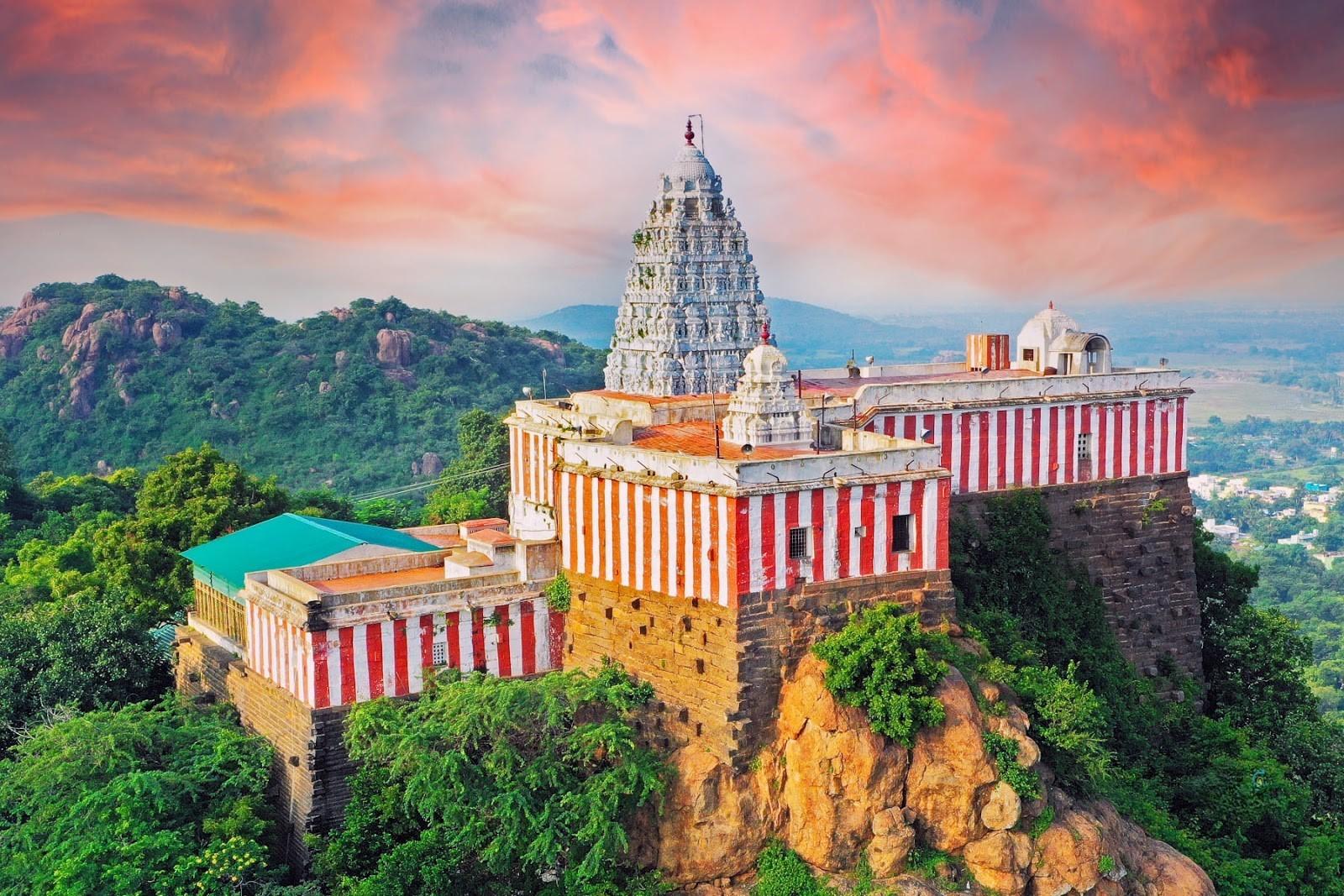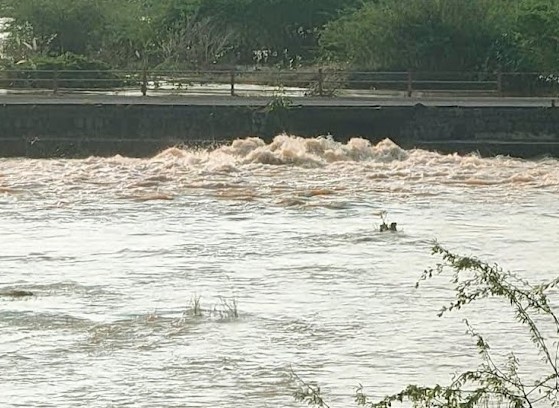The Origin of Thirukazhukundram
Thirukazhukundram derives its name from the Tamil words Thiru (respect), Kazhugu (eagle), and Kundram (mount). Over time, the name evolved from Thirukazhugukundram to Thirukazhukundram.
The Legend of the Egyptian Vultures
For centuries, Thirukazhukundram was renowned for the daily visit of a pair of Egyptian vultures to the temple. These birds arrived at noon to accept Prasadam (offering) from the temple priests. Despite no one knowing their origin, they faithfully followed this practice for generations, earning the town the title of Pakshi Theertham (Bird’s Holy Lake).
Feeding Tradition and Disappearance
The temple priests traditionally fed the vultures a mixture of rice, wheat, sugar, and ghee. On occasions when the vultures did not appear, the priests attributed their absence to the presence of sinners among the crowd. In 1998, the birds stopped appearing altogether. Their absence is believed to signify the completion of their penance or the culmination of their role in the Kali Yuga.
Mythological Significance
The Curse of the Ashtavasus
According to legend, the Ashtavasus (eight sages) incurred Lord Shiva’s anger, leading to a curse that transformed them into birds. Shiva instructed them to perform penance by visiting his temple daily for three Yugas (epochs). Six sages attained Mukti (emancipation), while two remained in their bird form into the Kali Yuga.
Sage Poosha and Sage Vidhadha
Another legend identifies the vultures as Sage Poosha and Sage Vidhadha. These sages sought the elevated Sharoopa status from Shiva, but their insistence angered the deity, who cursed them to remain as vultures until the end of the Kali Yuga. Following Shiva’s decree, they visited the temple, partook of the Prasadam, and performed penance.
The Role of the Birds in Kali Yuga
In the current epoch, the birds were known as Pusha and Vidhadha. They were believed to bathe in Rameshwaram, eat at Thirukazhukundram, and spend the rest of the day in Kasi. Their disappearance in 1998 is attributed to either the culmination of their penance or the overwhelming presence of sinners in the temple crowd.
Spiritual Lessons from the Legend
The story of Thirukazhukundram and its Egyptian vultures is a powerful reminder of devotion, penance, and the divine justice of Lord Shiva. It also emphasizes the sanctity of Thirukazhukundram as a site of spiritual significance.
Significance of the Eagles:
- According to a legend, sage Pusha and sage Vidhadha performed penance on Lord Shiva seeking Sharoopa status.
- Lord modified their demand and granted the Sayujya status and promised elevation to Sharoopa later.
- The sages refused to accept the offer and were adamant on their demand. The angry Lord cursed them to become eagles. Since then, they are in this hill known as Shambu and Aadhi and are worshipping Lord with the Pakshi Theertha they had created.
- It is believed that they are the two eagles that visit Thirukazhukundram daily from time immemorial, in order to worship Siva and to obtain salvation from their curse.
- To attain moksha and regain their original forms, they have to worship the deity of this temple till the end of Kaliyuga.
- While these sacred Eagles were known as Sandan and Prasandan in Thretha Yuga, Sambathi and Jatayu in Krutha Yuga, Sambhukthan and Mukundan in Dwapara Yuga, in Kali Yuga they are now known as Pusha and Vidhadha.
- It is said that after a bath in the Ganges in the morning, they come here at noon for food, reach Rameswaram in the evening for darshan and return to Chidambaram for the night.
- The eagles circle around the temple top and approach the priest.
- They eat the balls of rice and after cleaning their beaks in the water kept in a small vessel nearby, take off, circle around the tower again and fly off.
- This has been going on for centuries now.
- The scene is also sculpted on one of the walls in front of Goddess Thirupurasundari, in the lower temple.
- The two sacred eagles appearing over the temple to worship the Lord every day are a major attraction for the devotees.
- Legend also says that the birds will not come if there are sinners in the crowd which assembles at the temple.
- Till 1998, the mystical bird pair used to appear every day at noon at Thirukazhukundram.
- But one day they stopped coming and they simply vanished.
- For the local people, it’s a bad omen and attributed to the presence of sinners among the onlookers.
- For a decade now, no mythical birds had visited the temple, but the ritual is practiced by the temple priest in the hope that they eventually will turn up some day.
Unique phenomenon of birth of Conch:
- It is believed that Saint Markandeya came down here after visiting Benares.
- He wished to have a bath in the sacred tank and perform abhishekam to the Siva lingam here, but he found no vessel to take the water.
- Just then a conch suddenly emerged from the tank, with a humming sound, and Markandeya performed the abhishekam.
- It is said that even now once in 12 years, a conch emerges from this water, which the temple authorities collect with all honors and preserve in the temple in an enclosed glass box with dates mentioned therein.
- It is astonishing that a conch gets formed in fresh water since the natural phenomenon of a birth of a conch can happen only in salt water.
- Abhishekam is performed to Lord Vedagiriswarar with the collected conches on the last Monday in the Tamil month of Karthigai.
PURANIC SIGNIFICANCE:
Vedagiriswarar:
Sage Bharadhwaja prayed to the Lord Shiva for a long life so he could learn all the Vedas. Shiva appeared before him and granted him the wish to learn the Vedas and created three mountains each signifying a Veda (Rig, Yajur and Sama). Shiva took a handful of mud and said "Dear Bharadhwaja! The Vedas that you could learn are only this handful compared to the mountains present here, even if you live much longer and hence, learning is never ending and could possibly not be the route for Salvation". Shiva also said that in Kaliyuga, the simplest and the surest way to salvation is Bhakti or unfettered devotion, service and love of God and his creations.
The hillock is named as Vedagiri, since it is traditionally believed that the four (Rig, Yajur, Sama and Atharvana) Vedas are seen one above the other in the form of four rocks. Lord Shiva is believed to be emerging from the head of the fourth (Atharvana) Veda and said to have derived the name Vedagiriswarar (a Swayambhu lingam), the presiding deity of the temple situated on the hilltop.
Indra is worshipping Lord Shiva here:
- It is believed that Indira is still worshipping Lord in this temple.
- As an evidence of this fact, thunder falls through a hole in the tower above the sanctum sanctorum (Vimana) and goes around the Shivalinga.
- Unbearable heat is experienced while opening the sanctum the next day.
- This happens once every few years.
- Scientists had proved that such an incident took place on the 10th November 1930.
Nandi Theertham:
The Nandi once undertook penance on Earth. Pleased with him, Siva appeared before him and granted boon. The Nandi desired that the place and the tank be named after him and asked that those taking a dip in the tank and offering prayers to Lord Vedagiriswarar be absolved of their sins. His prayer was granted and hence the place is also known as Nandipuram and the tank, Nandi Theertham.
Thirukazhukundram:
The word Thirukazhukundram comes from the Tamil words Thiru (Respectful), Kazhugu (Vulture/Eagle), Kundram (mount). It was known as "Thirukazhugukundram" in ancient times, which, overtime became Thirukazhukundram.
Sangu Thirtha Pushkara Mela:
- According to the Sthalapuranam, Lord Siva himself had declared Sangu tank to be the holiest of all, and as per his command, all the sacred waters in India would meet here once in 12 years when Guru (Jupiter) enters Kanya rasi.
- The event is conducted as a festival known as Sangu Thirtha Pushkara Mela when there is a huge gathering from all parts of the country (The Hindu 02, August 2002).
- There is an interesting story prevalent with respect to the origination of Sangu Theertha Pushkara Mela festival. There occurred a tussle of proving supremacy amongst various rivers such as Ambai, Indraputra, Rudra, Cauvery, Pamba, Yamuna, Thamirabarani, Vaigai, to name a few.
- Each one touted itself to be the best. The rivers then decided to worship Lord Vedagiriswarar by taking bath in the Sangu Theertham.
- The Lord appeared before the rivers and told them that none of them was superior before the conch that appeared in the tank, which was used to perform abhishekam to Lord. The rivers felt ashamed about their mean fight and then decided to take bath in the Sangu Theertham during the day of transition of Jupiter into Virgo rasi.
Lord Shiva initiation of Panchakshara to Manikkavasakar:
It was in Bhaktavachaleswarar Temple that Lord Siva appeared before the Tamil saint Manikkavasakar, in the form of Dakshinamurthy, and initiated him into the secrets of the holy Panchakshara.
Part of Sanjeevi Parvatha:
When Sri Anjaneya took the Sanjeevi Parvatha from the Himalayas, some parts of the mountain fell over this mountain. Hence even today rare herbals are available here.
Different Names:
The place has been called Pakshi Theertham, Uruthrakodi, Nandipuri, Indrapuri, Narayanapuri, Brahmapuri, Dinakarapuri, Muniganapuri in the past.
Equivalent to Amaravathi:
Saint Arunagirinathar describes the place as the one equal to Amaravathi, the capital of Indira.
King Suraguru had Lord Shiva darshan here:
It is believed. King Suraguru, to whom Lord granted darshan, was instrumental for the creation of this sacred place.
ADMINISTRATION:
The temple is currently administered by the Hindu Religious and Charitable Endowments Department of Tamil Nadu.

